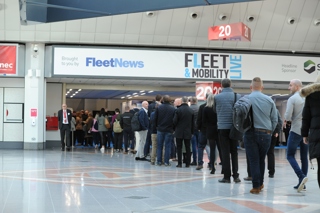Driver power influences replacement cycles
While most fleets seem set to retain extended replacement cycles, some are looking to shift policy back. Two key factors are influencing this reversal – driver power and cost concerns.
The influence of drivers over replacement cycles tends to vary according to which industry sector a fleet is operating in.
According to the Fleet200 Market Dynamics Report, a detailed analysis of Britain’s largest fleets by Fleet News’s sister company Sewells, drivers have most influence on fleet policy in perk-car heavy sectors, such as banking, accountancy and IT.
John Kelly, from GE Capital, says: “We have started to see some interesting trends.
"Most notably, HR departments are starting to gain traction for the earlier replacement of cars as a tool to aid the recruitment and retention of key staff.”
The second key factor – cost concerns – relates to accessing running cost savings obtained by shifting to more modern, efficient technology, a calculation that must be balanced against the additional investment required to obtain a new vehicle.
Kelly adds: “With rapidly improving engine and drivetrain technology, CO2 emissions are being driven down year-on-year and MPG performance is getting better.
Drivers therefore want to change cars more often to minimise both their benefit-in-kind tax liability and personal fuel bills. Lower CO2 and fuel bills are also good news for employers.”
Nick Jones, principal consultant at Lex Autolease, says: “As technology advances and fuel potentially becomes the most significant proportion of the wholelife running cost of the vehicle, then fleets might choose to flip the vehicles on a short cycle rotation.
This tipping point will depend on a number of factors such as availability of product, pricing of new ‘super-efficient’ models, discounts and the desire for these new technologies in the second-hand market.”
To extend or not to extend
The pros
- Cheaper rentals/lower expenditure on replacements. Leasing savings can be worth several hundred pounds a year per car.
- Image – customers might not appreciate what’s perceived to be a profligate approach to buying new cars at a time of austerity
The cons
- Risk of higher SMR bills if cars are not looked after
- Lower residual values
- De-motivated staff
- Slower to exploit advances in safety technology/fuel efficiency
- Cost of MOT in fourth year
- Car might fall out of manufacturer warranty in fourth year


















Login to comment
Comments
No comments have been made yet.